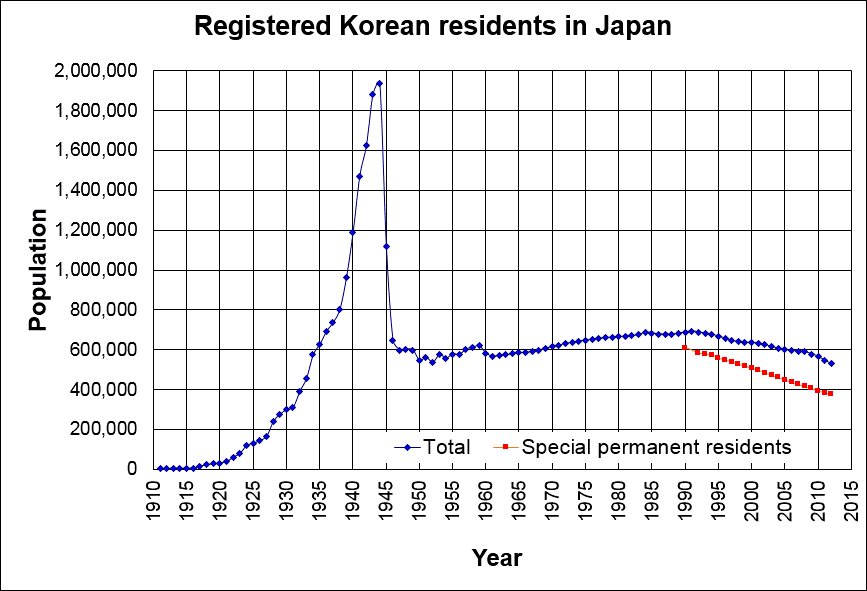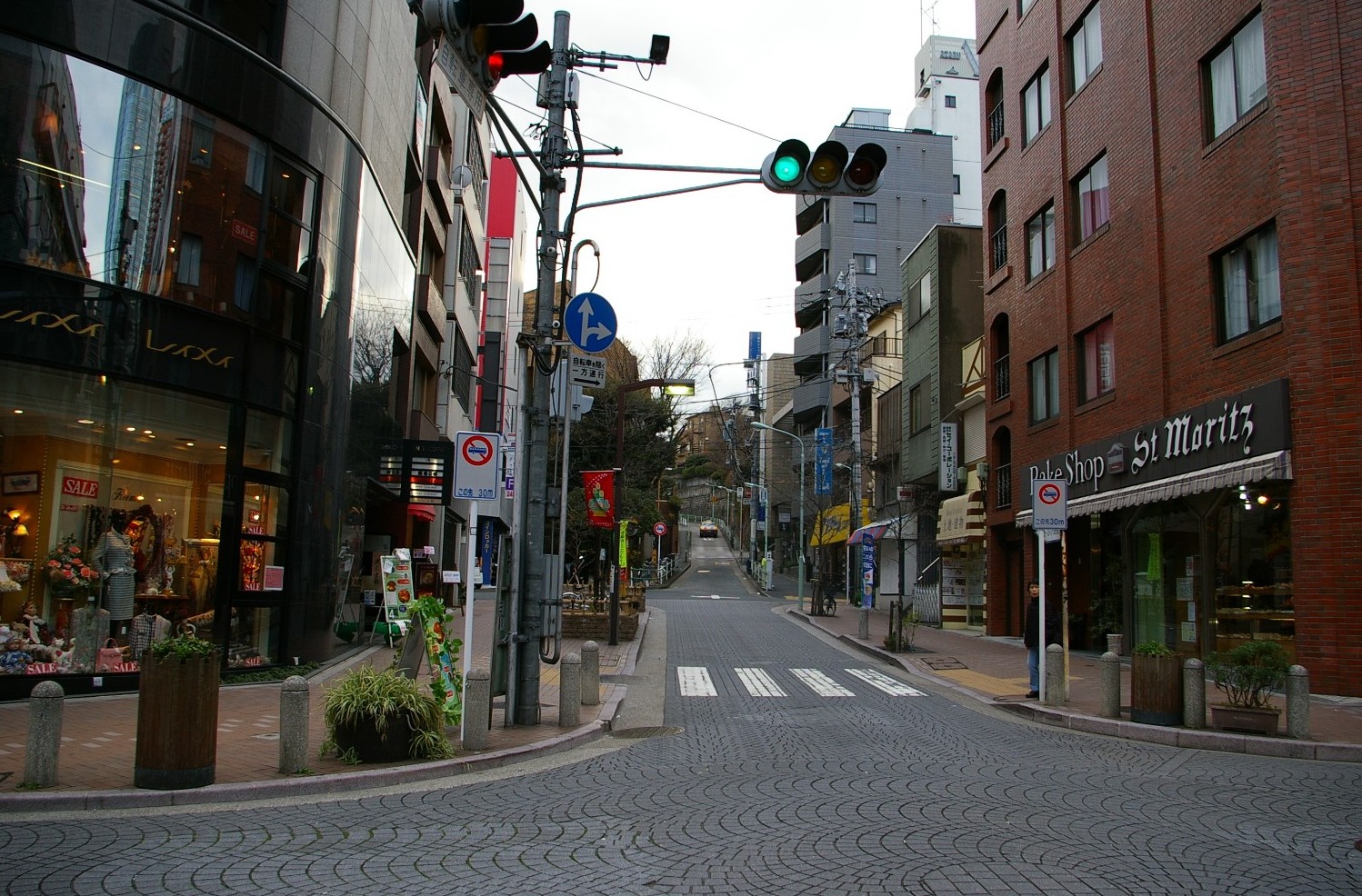|
Mindan
Mindan ( ko, 민단), or the Korean Residents Union in Japan (), is one of two main organizations for Koreans living in Japan, the other being Chongryon. Mindan has ties to South Korea and was established in 1946 in Tokyo, Japan. Currently, among the 610,000 Korean residents in Japan who have not become naturalized Japanese citizens, 65% are members of Mindan, and another 25% are members of Chongryon. Mindan members prefer the modern South Korean term to be used when discussing Korea. Chongryon members, some of whom are North Korean fellow travellers, prefer the older term . Because ''Chōsen'' was the term used during the Japanese rule of Korea and North Korea does not recognize ''Kankoku'', this causes enmity between the groups. History Mindan was established in 1946 as the . With the founding of the South Korea in 1948 the name ''Chōsen'' was dropped, and the organization was reincorporated as . The Korean War (1950–1953) brought about a sharp division between members o ... [...More Info...] [...Related Items...] OR: [Wikipedia] [Google] [Baidu] |
Zainichi Korean
comprise ethnic Koreans who have permanent residency status in Japan or who have become Japanese citizens, and whose immigration to Japan originated before 1945, or who are descendants of those immigrants. They are a group distinct from South Korean nationals who have emigrated to Japan after the end of World War II and the division of Korea. They currently constitute the second largest ethnic minority group in Japan after Chinese immigrants, due to many Koreans assimilating into the general Japanese population. The majority of Koreans in Japan are , often known simply as , who are ethnic Korean permanent residents of Japan. The term Zainichi Korean refers only to long-term Korean residents of Japan who trace their roots to Korea under Japanese rule, distinguishing them from the later wave of Korean migrants who came mostly in the 1980s, and from pre-modern immigrants dating back to antiquity who may themselves be the ancestors of the Japanese people. The Japanese word "Zain ... [...More Info...] [...Related Items...] OR: [Wikipedia] [Google] [Baidu] |
Zainichi Korean Culture
comprise ethnic Koreans who have permanent residency status in Japan or who have become Japanese citizens, and whose immigration to Japan originated before 1945, or who are descendants of those immigrants. They are a group distinct from South Korean nationals who have emigrated to Japan after the end of World War II and the division of Korea. They currently constitute the second largest ethnic minority group in Japan after Chinese immigrants, due to many Koreans assimilating into the general Japanese population. The majority of Koreans in Japan are , often known simply as , who are ethnic Korean permanent residents of Japan. The term Zainichi Korean refers only to long-term Korean residents of Japan who trace their roots to Korea under Japanese rule, distinguishing them from the later wave of Korean migrants who came mostly in the 1980s, and from pre-modern immigrants dating back to antiquity who may themselves be the ancestors of the Japanese people. The Japanese word "Zain ... [...More Info...] [...Related Items...] OR: [Wikipedia] [Google] [Baidu] |
Chongryon
The General Association of Korean Residents in Japan, " ''''. Retrieved on 17 January 2009. abbreviated as ( Korean: , : ) or (Japanese: ), is one of two main organisations for (or ) Koreans (Korean citizens or residents of Japan) and has close ties to (DPRK). As there are no diplomatic [...More Info...] [...Related Items...] OR: [Wikipedia] [Google] [Baidu] |
Ethnic Issues In Japan
Racism in Japan comprises negative attitudes and views on race or ethnicity which are related to each other, are held by various people and groups in Japan, and have been reflected in discriminatory laws, practices and actions (including violence) at various times in the history of Japan against racial or ethnic groups. According to census statistics in 2018, 97.8% of Japan's population are Japanese people, Japanese, with the remainder being foreign nationals residing in Japan. The number of foreign workers has increased dramatically in recent years, due to the Aging of Japan, aging population and a shrinking labor force. A news article in 2018 suggests that approximately 1 out of 10 people among the younger population residing in Tokyo are foreign nationals. According to the CIA World Factbook, Japanese make up 98.1% of the population, Chinese 0.5%, and Korean 0.4%, with the remaining 1% representing all other ethnic groups. Japan lacks any law which prohibits racial, ethnic, ... [...More Info...] [...Related Items...] OR: [Wikipedia] [Google] [Baidu] |
Tokyo Korean School
Tokyo Korean School ( ja, 東京韓国学校 ''Tōkyō Kankoku Gakkō'', ko, 동경한국학교) is a Korean school located in Wakamatsu-cho, Shinjuku-ku, Tokyo, Japan; catering to the Korean expatriate community and to Japanese-Koreans living in and around Tokyo. It was founded in 1954. It is affiliated with the South Korean government and Mindan (민단). It includes an elementary school, a middle school and a high school. The total population of the school is approximately 1,100 students. The primary language of instruction at the school is Korean. However, there is aEnglish language departmentanat the school. Educational essentialism is the main educational philosophy of teachers in both the Korean and English departments at the school. Notable alumni * Kwon Ri-se * Zico See also * Tokyo Korean Culture Center - South Korean culture center in Tokyo References Japanese international schools in South Korea: * Japanese School in Seoul * Busan Japanese School F ... [...More Info...] [...Related Items...] OR: [Wikipedia] [Google] [Baidu] |
Azabu
is an area in Minato,Tokyo, Japan. Built on a marshy area of foothills south of central Tokyo, its coverage roughly corresponds to that of the former Azabu Ward, presently consisting of nine official districts: Azabu-Jūban, Azabudai, Azabu-Nagasakachō, Azabu-Mamianachō, Nishi-Azabu, Higashi-Azabu, Moto-Azabu and Roppongi. It is known as one of Tokyo's most expensive and upscale residential districts with many artists, business people, and celebrities residing there. It is also known for its large foreign population, due in part to a number of foreign embassies present in the area. History The name Azabu literally means hemp cloth. Until the early Edo period, the area was agricultural. Archaeological evidence indicates that the area was inhabited as far back as the Jōmon period. The Juban Inari shrine (formerly known as Takechiyo Inari) was constructed in AD 712, the temple of Zenpuku-ji in 824, and the Hikawa Shrine in 939 (on orders of Minamoto no Tsunemoto). ... [...More Info...] [...Related Items...] OR: [Wikipedia] [Google] [Baidu] |
Koreans
Koreans ( South Korean: , , North Korean: , ; see names of Korea) are an East Asian ethnic group native to the Korean Peninsula. Koreans mainly live in the two Korean nation states: North Korea and South Korea (collectively and simply referred to as just Korea). They are also an officially recognized ethnic minority in other Asian countries; such as China, Japan, Kazakhstan and Uzbekistan. Koreans also form sizeable communities in Europe, specifically in Russia, Germany, United Kingdom, and France. Over the course of the 20th century, Korean communities have also formed in the Americas (especially in the United States and Canada) and Oceania. As of 2021, there were an estimated 7.3 million ethnic Koreans residing outside Korea. Etymology South Koreans refer to themselves as Hanguk-in(Korean: 한국인, Hanja: 韓國人) or Hanguk-saram (''Korean: 한국 사람''), both of which mean "people of the Han". When including members of the Korean diaspora, Koreans often use ... [...More Info...] [...Related Items...] OR: [Wikipedia] [Google] [Baidu] |
Non-governmental Organization
A non-governmental organization (NGO) or non-governmental organisation (see American and British English spelling differences#-ise, -ize (-isation, -ization), spelling differences) is an organization that generally is formed independent from government. They are typically nonprofit organization, nonprofit entities, and many of them are active in humanitarianism or the social sciences; they can also include club (organization), clubs and voluntary association, associations that provide services to their members and others. Surveys indicate that NGOs have a high degree of public trust, which can make them a useful proxy for the concerns of society and stakeholders. However, NGOs can also be lobby groups for corporations, such as the World Economic Forum. NGOs are distinguished from International organization, international and intergovernmental organizations (''IOs'') in that the latter are more directly involved with sovereign states and their governments. The term as it is used ... [...More Info...] [...Related Items...] OR: [Wikipedia] [Google] [Baidu] |
Baekdu Hagwon
Educational Foundation Baekdu Hagwon Keonguk (Korean: 오사카백두학원, Japanese: 白頭学院 建国 ''Hakutō Gakuin Kenkoku'' - Keonguk/Kenkoku means "country-building"; Japanese name means "Hakuto School"), is a South Korean international school located in Sumiyoshi-ku, Osaka. It serves kindergarten through high school. It is recognized by the government of Osaka Prefecture as an Article 1 private school under the School Education Act. The Keonguk Industrial School and Keonguk Higher Girls' School of the Baekdu Association were founded in March 1946. Archive . Baeku Hagwon. Retrieved on August 17, 2015. See also Japanese international schools in South Korea: * |
Korean Diaspora In Asia
Korean may refer to: People and culture * Koreans, ethnic group originating in the Korean Peninsula * Korean cuisine * Korean culture * Korean language ** Korean alphabet, known as Hangul or Chosŏn'gŭl **Korean dialects and the Jeju language **See also: North–South differences in the Korean language Places * Korean Peninsula, a peninsula in East Asia * Korea, a region of East Asia * North Korea, the Democratic People's Republic of Korea * South Korea, the Republic of Korea Other uses *Korean Air, flag carrier and the largest airline of South Korea See also *Korean War, 1950–1953 war between North Korea and South Korea *Names of Korea There are various names of Korea in use today, all derived from ancient kingdoms and dynasties. The modern English name "Korea" is an exonym derived from the name Goryeo, also spelled ''Koryŏ'', and is used by both North Korea and South Korea in ..., various country names used in international contexts * History of Korea, the history o ... [...More Info...] [...Related Items...] OR: [Wikipedia] [Google] [Baidu] |
Ethnic Organizations Based In Japan
An ethnic group or an ethnicity is a grouping of people who identify with each other on the basis of shared attributes that distinguish them from other groups. Those attributes can include common sets of traditions, ancestry, language, history, society, culture, nation, religion, or social treatment within their residing area. The term ethnicity is often times used interchangeably with the term nation, particularly in cases of ethnic nationalism, and is separate from the related concept of races. Ethnicity may be construed as an inherited or as a societally imposed construct. Ethnic membership tends to be defined by a shared cultural heritage, ancestry, origin myth, history, homeland, language, or dialect, symbolic systems such as religion, mythology and ritual, cuisine, dressing style, art, or physical appearance. Ethnic groups may share a narrow or broad spectrum of genetic ancestry, depending on group identification, with many groups having mixed genetic ancestry. Ethni ... [...More Info...] [...Related Items...] OR: [Wikipedia] [Google] [Baidu] |
Korean Diaspora
The Korean diaspora (South Korea: or , North Korea: or ) consists of around 7.3 million people, both descendants of early emigrants from the Korean Peninsula, as well as more recent emigres from Korea. Around 84.5% of overseas Koreans live in just five countries: China, the United States, Japan, Canada, and Uzbekistan. Other countries with greater than 0.5% Korean minorities include Brazil, Russia, Kazakhstan, Vietnam, the Philippines, and Indonesia. All these figures include both permanent migrants and sojourners. Terminology There are currently a number of official and unofficial appellations used by the authorities of the two Korean states as well as a number of Korean institutions for Korean nationals, expatriates and descendants living abroad. Thus, there is no single name for the Korean diaspora. The historically used term ''gyopo'' (교포/僑胞, also spelled ''kyopo'', meaning "nationals") has come to have negative connotations as referring to people who, as a result ... [...More Info...] [...Related Items...] OR: [Wikipedia] [Google] [Baidu] |






